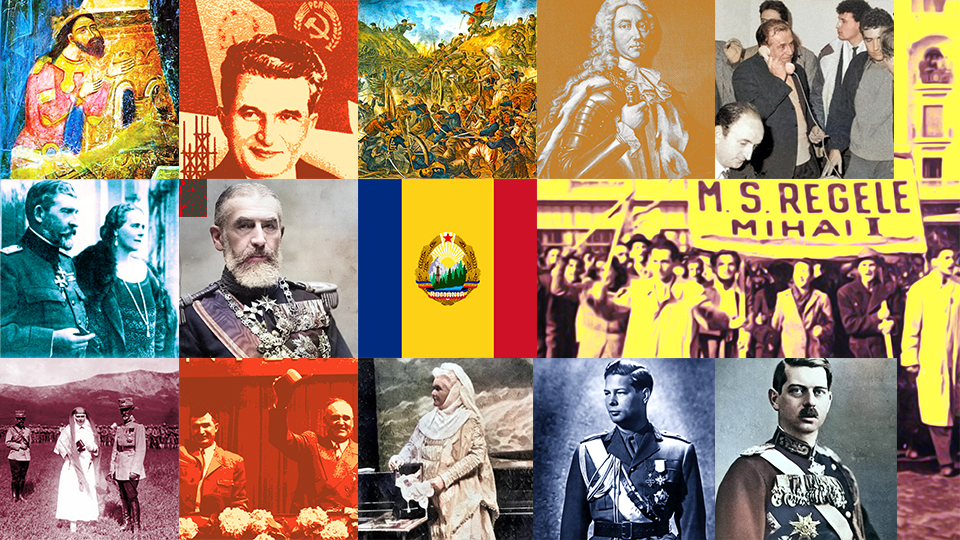Giuseppe Mazzini and the Romanians
The Romanian political elites of 1848 were influenced by the ideas of the Italian Giuseppe Mazzini.

Steliu Lambru, 11.11.2024, 14:11
Romania is the creation of ideas from Western Europe in the first half of the 19th century and of the lobby led by the generation of young Romanian political elite, educated in the West, the so-called Pașoptisti. The ideas of ethnic nation, union in one state and form of government had the greatest impact on the Romanian public. One of the most influential thinkers in the Romanian public space was the Italian lawyer and publicist Giuseppe Mazzini (1805-1872), a remarkable representative of the Risorgimento, the Italian renaissance movement of the 19th century.
A radical democrat, republican, revolutionary and fighter for the unification of Italy, Mazzini was born during the Napoleonic wars in Genoa and was raised and educated in keeping with the Jacobin ideas of the French Revolution. One of the driving ideas of the French revolutionary spirit was the legacy of ancient Rome to which Mazzini adhered with all conviction. In the late 1820s, he joined the Carbonarian movement that fought against multinational empires, especially Austria. In 1831, Mazzini founded the Young Italy Society. During the revolution of 1848, in the organization of which he was involved and which proclaimed the republic, Mazzini held the highest political position. The sharp writings of the Italian revolutionary mobilized an important part of the young Romanian intellectuals from Wallachia much more stronger than it mobilized those from Moldova. The idea of the Romanian ethnic nation, the Latinity and the union of the two Romanian principalities, constituted the central axis of the revolutionary program of the 1848 Romanian generation.
Historian Remus Tanasă is the author of the volume Apostle of the nation. Mazzini and the birth of modern Romania in which the influence that the Italian revolutionary had on the Romanian spirit is described. The Romanian elites appropriated Mazzini’s ideas, applied them to the Romanian case they wrote about in the Western press, brought them and spread them in the two principalities.
Remus Tanasă: A part of the Romanian elites discovered Mazzini in the 1830s, before and around the People’s Spring of 1848-1849. Mazzini was one of the three triumvirs of the Second Roman Republic for a brief period of a few months. The Pope was driven from Rome and the Eternal City was ruled by a triumvirate. Of the three, Mazzini was the most important, primus inter pares.
Mazzini’s ideas gained followers especially in Wallachia, where the revolutionary ideas were stronger and where the European movement of 1848 had ended with the appointment of a revolutionary government. According to Remus Tanasă, the most important names of Romanian 1848 elites were bewitched by Mazzini’s words, including Nicolae Bălcescu: The first two names are Dumitru Brătianu, the older brother of Ion C. Brătianu, and C. A. Rosetti. Dumitru Brătianu even joined one of Mazzini’s initiatives in London, the Central European Democratic Committee, which was operational between 1850 and 1853. Mazzini’s ideas sprouted in the Romanian space later, after the end of the Crimean War in 1856. The second name, C. A. Rosetti, was much more closely related to Mazzini in temperament, though they never met. He is one of the Romanians who had Mazzini’s portrait on his desk until the death of the latter.
Remus Tanasă showed how the Romanians used the Italian’s writings: Mazzini promoted several controversial ideas. The most important for the Romanian space and for the 1848 elites was the idea of nation. Mazzini was a tireless promoter of the idea that made the nation a political subject through the nation-state. This is why one of Mazzini’s nicknames was that of apostle of the nation. In the period after 1848, it was necessary for the Romanians to make known their roots, their identity. Even Mazzini, until 1848, was confused about the identity of the Romanians. After 1848, the Romanian elites not only wrote about Romanians in languages of European circulation, but also, through the revolutionary moment in Bucharest, they managed to draw the attention of decision-makers and of various revolutionary camps in the West regarding the Latin identity of Romanians.
A staunch republican, Giuseppe Mazzini opposed the idea of monarchy. The Romanian elites understood that some of his ideas were far too advanced for a peripheral European political society, as the Romanians were. Remus Tanasa: Our 1848 elites, of course, were also republicans in the beginning. But they realized that in a Europe of monarchies, the republican idea could not win. So they gave priority to the idea of nation and national unity of the Romanians, leaving the idea of a republic in the background. Paradoxically, Mazzini did not want and did not intend to give up the idea of a republic. As regards the Romanians, he advised Dumitru Brătianu to accept and negotiate with statesmen from the West, leaving aside the idea of a republic.
As it always happens, political ideas live their heyday and are always subject to criticism and reformulation. Towards 1900, Mazzinis ideas lose their influence in Romania, and circulated only as legacy of the past.






























